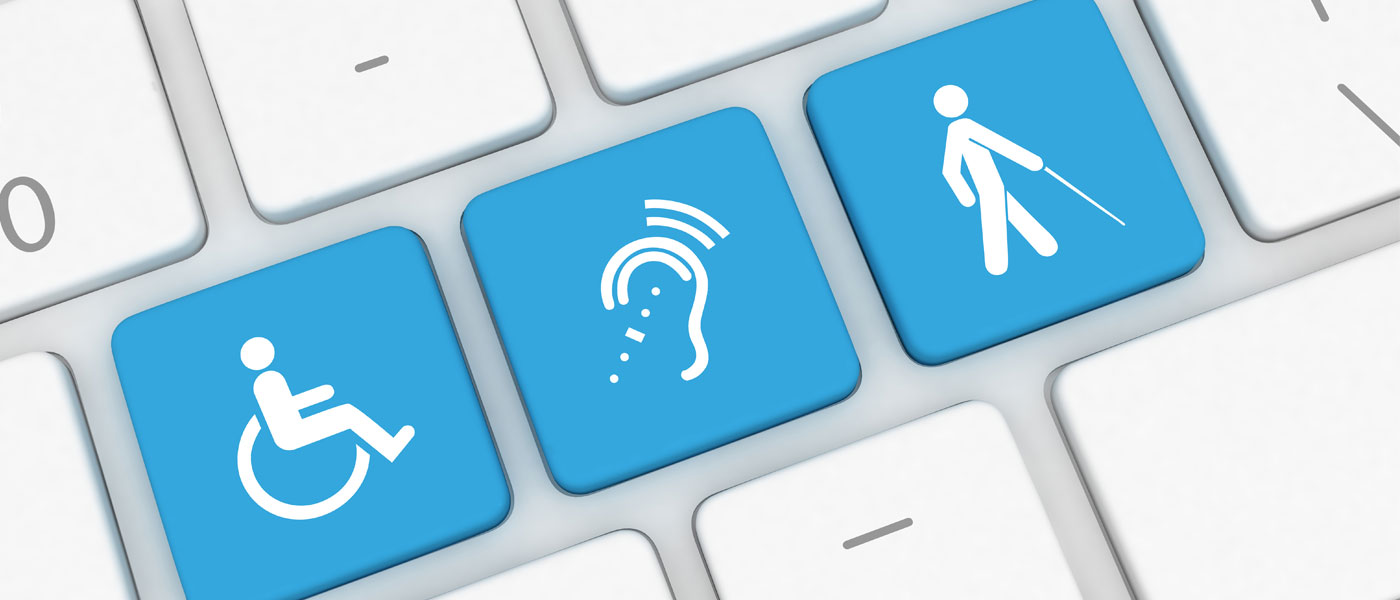Think about it: You’re trying to complete an online form, but then the webpage gives confusing, conflicting information. The submission button doesn’t seem to work, and the embedded image with instructions is grainy and hard to read.
This experience is one we all have likely encountered at some point.
And for those who use assistive devices to navigate websites—as many people with disabilities or impairments do—this likely happens daily.
The key to ensuring these frustrating experiences don’t occur? Digital accessibility, an approach to online content that ensures everyone has equitable access to information, regardless of their abilities. Digital accessibility is achieved through practices that reduce the barriers that prevent users from perceiving, understanding or operating digital content, driven by guidelines and laws.
At Case Western Reserve University, individuals at all levels are committed to improving the accessibility of all content we share online, whether through social media, websites, videos, documents or other forms of digital content. To help guide faculty, staff and students in that mission, the university recently hired La Tasha Simms as the digital accessibility leader on the [U]Tech Teaching & Learning Technologies team.
With July being Disability Pride Month, we asked Simms to share her thoughts on how members of the campus community can start their journeys toward creating more accessible, inclusive online experiences.
Looking for more resources? Check out the accessibility website or contact tltaccessibility@case.edu for support. Students can request accommodations through Disability Resources. Faculty and staff can contact the Office of Equity for accommodation requests.
1. What are some misconceptions about this topic?
Digital accessibility only helps certain people. [All people] have similar needs when it comes to digital accessibility, and addressing these barriers improves [circumstances for] the community as a whole.
2. Why is it important to consider digital accessibility in courses, communication and other activities?
We all learn differently, and education should reflect that. Another set of principles that grew out of Universal Design was Universal Design for Learning (UDL). UDL is an educational framework that provides learners with equal opportunities to access, participate in, and progress in their learning.
3. What are some examples of actions that can improve digital accessibility?
- Avoid uploading scanned documents—these cannot be read by a screen reader, which is a barrier for anyone who learns audibly or has limited motor function.
- When uploading documents with images and using hyperlinks, be sure to provide descriptions. Descriptions enhance the learning environment for those who may have hearing barriers.
- Uploaded videos/audio files should have captions or transcripts. This enhances comprehension for learners with cognitive or language barriers.
- Choose colors that are easy to read and fonts that are easily seen or understood.
- Use a template. CWRU provides templates that are generally more accessible and time efficient than creating your own.
4. As an expert in this topic, was there anything that surprised you about digital accessibility practices when you were first getting started on your own journey?
I was surprised to see the impact that digital accessibility awareness can bring. In my experience, once people understand what digital accessibility is, why it’s important, and how easy it is to make our environment accessible, they are motivated to create more inclusive environments.
5. What would you say to someone who wants to get started but is concerned about making an error?
When it comes to digital accessibility our motto is progress, not perfection. We expect that everyone will try. I would suggest starting off by learning to use the accessibility checker in Adobe Acrobat Pro.

